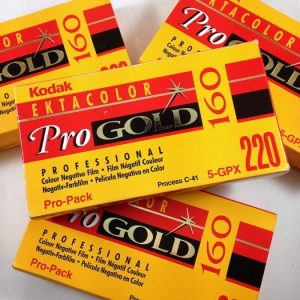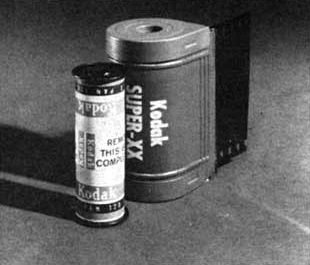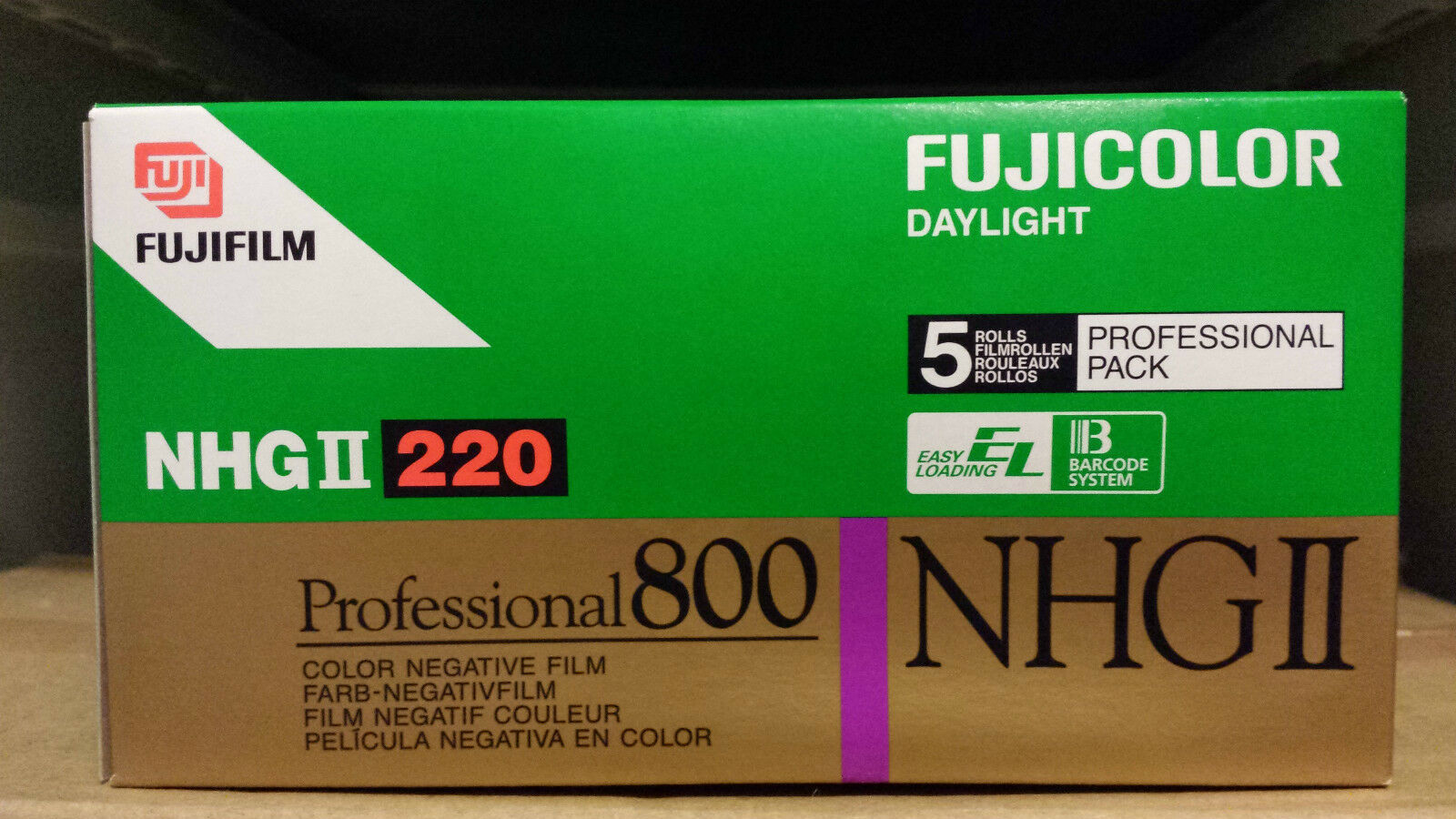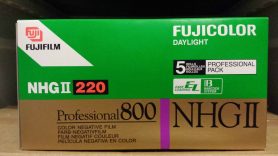Have you ever felt limited while shooting your favorite Mamiya M645, Rolleiflex, or Kodak Medalist by only getting 16, 12, or 8 exposures per roll of 120? What if I told you that there was an exciting new development in film that would allow you to get 32, 24, or 16 exposures from a single roll in those same cameras?

I imagine the intro above must have really excited professional photographers back in 1964 when a new format of film called 220 was being released that doubled the number of exposures per roll, meaning a photographer only had to change rolls half as often as before.
This week’s Keppler’s Vault comes from the November 1964 issue of Modern Photography, and details the Eastman Kodak Company’s announcement for a variation of 120 roll film that was twice as long, offering double the amount of photographs per roll.
For anyone who has ever handled a roll of 120 film, it’s pretty obvious that the film and backing paper take up the whole thickness of the spool, so how do you double the length of the film without going beyond the flanges of the spool? Eliminate the backing paper, that’s how!
Of course, you can’t eliminate all of the backing paper, otherwise your film would lose it’s daylight loading and unloading ability. You still need some backing paper at the beginning and end of the film to protect it when it’s out of the camera. But for the length of the roll where the film is being exposed, Kodak’s new 220 film goes naked.

Kodak’s new 220 film wasn’t without it’s cons. Without backing paper behind the photographic film, you lose any ability to see exposure numbers through the little red peep holes on many medium format cameras. Also, by eliminating the backing paper, the thickness of the combined paper and film distance between the film gate of the camera and pressure plate is slightly altered, which in some cameras could create a film flatness issue.

As a result, you can’t simply load 220 into any camera designed for 120, the camera had to support certain features to make it work without ruining the film in the camera. For one, the camera couldn’t have any type of red window. It needed to have the ability to count exposures using some type of “feeler” gauge or toothed shaft that rotates as the film passes by it. The camera needed to be able to detect the start of the film, and properly advance the film throughout the entire length of the film, without letting any light into the film compartment. The pressure plate also needed to be adjustable to provide a different amount of pressure depending on if 120 or 220 film was being used. And of course, the camera needed a way to count up to 32, 24, or 16 exposures (depending on aspect ratio).

These necessities of 220 meant that the cameras that could use it were likely expensive and targeted at professional photographers only. Your basic medium format folding cameras or cheap Bakelite TLRs would not be able to use it.
There were a small number 120 (or 620) cameras that weren’t designed specifically for 220, but will still support it. This involves loading 220 into the camera with a piece of backing paper taped to the film pressure plate to add additional pressure on the paperless 220 film, and then resetting the frame counter after the 8th, 12th, or 16th exposure before continuing onto the second half of the roll. The Modern Photography article talks about this using a Hasselblad, and I discuss this option in my review for the Kodak Medalist, where I successfully got 16 (OK, actually 15) shots on a single roll of hand rolled 220 on a 620 spool.
Nevertheless, professional photographers embraced the format and used it extensively for weddings, sports, and other events where it’s not convenient to keep changing rolls of film. 220 would eventually be discontinued in early 2015 by Kodak Alaris when they stopped producing Portra 160 in the format. As disappointing as this is, film photography is still hanging on in popularity, and since 220 is just double length 120 with different paper, there’s really no reason it couldn’t one day be produced again!
All scans used with permission by Marc Bergman, 2019.



Shooting a 120 TLR camera from 1963 (a YashicaMat) and then getting my first Mamiyaflex, a C330F, in 1978, which was acquired for its shooting capabilities and spec, not for 220 film per se. However, running the first roll of 220 through it was like a breath of fresh air. 24 exposures per loading when I’d had years of being limited to 12, was a real advance. And it also meant that I could effectively develop 2 films at one go. Quite a saving in time.
There was a price premium over the standard 120 film, but this was well worth it.
Too bad that Ilford has no intention of reviving 220 films, and Kodak Alaris has enough of its own problems without that one… I still have 220 developing reels from the days of 220 HP5 and Tri-X Professional.
I have my fingers crossed that one day, someone will bring it back. It’ll likely be a niche film, but it really shouldn’t be that difficult to make again, especially for companies still producing 120.
I still have a handful of Konica 220 colour in the fridge. Because of the hassle of loading them into a reel, I’ve grudgingly come to accept the cost of getting them processed by one of the few companies that still handle 220.
It will be interesting to use them and see how they turn out, being fairly expired by now. I have two cameras that can use them – a Mamiya 645 and Pentacon Six, neither of them bought with the intention of using 220, but when the film cropped up on ebay I thought well, why not.
David, if you’re willing to take a chance at home developing, you can do 220 yourself on the same spools that handle 120. I use Paterson tanks and reels, and fitting a roll of 220 on one of them is not a problem. Another camera that can handle 220 that wasn’t designed for it, is the Kodak Medalist. You need to roll it onto a 620 spool, but it fit’s fine and the only thing you need to do is reset the exposure counter after the 8th frame back to 1 to shoot frames 9 – 16.
Hi Mike,
Just curious how you first wind on the 220 roll, since you cannot rely on frame numbers on backing paper to start frame 1 on the Medalist.
Love your detailed posts on the Medalist I/II, super helpful to get my newly acquired Medalist up and running.
Thanks in advance!
You will lose the first frame of the roll, because you need to keep the red window open for the exposure numbers and just look for where the backing paper ends and the physical film begins. Without any backing paper, light coming through the red window will expose that first frame, so I just discard it. Once you are certain you’ve reached the start of the film, close the red door, fire off a blank shot, and then advance to the second exposure and you’re good to go. You’ll get 15 exposures on a single roll in the Medalist!
Ok that makes sense, neat workaround. Thank you!